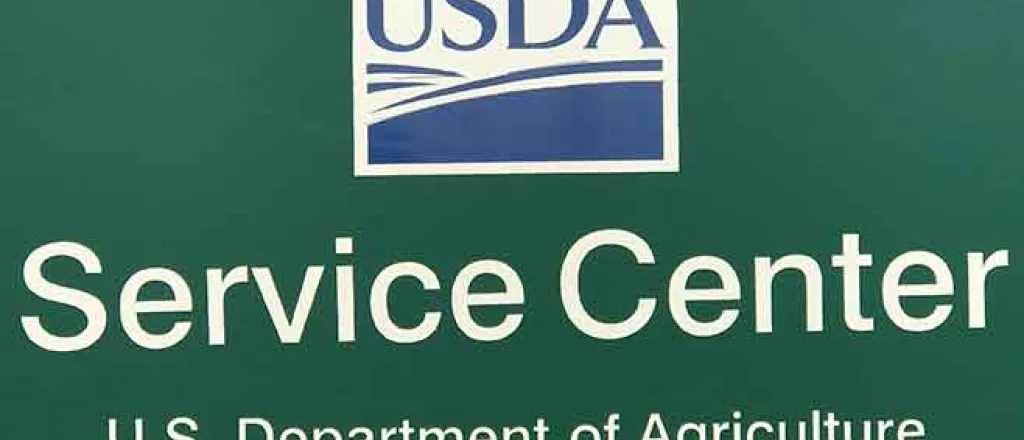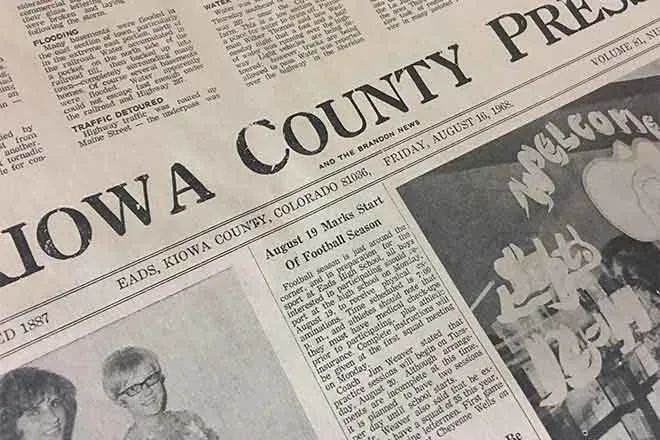
USDA Update – October 23, 2023
IMPORTANT DATES TO REMEMBER
- NOVEMBER 11, 2023 – SERVICE CENTER CLOSED – VETERAN’S DAY
- NOVEMBER 17, 2023 – APPLICATION DEADLINE FOR CSP & EQIP at NRCS
- NOVEMBER 15, 2023 - FALL ACREAGE REPORTING DEADLINE
- DECEMBER 1, 2023 - NAP APPLICATON FOR COVERAGE DEADLINE -
- Alfalfa and Grass
- JANUARY 30, 2024- LIVESTOCK FORAGE PROGRAM or LFP – Kiowa County eligible.
Disclaimer: Information in this UPDATE is pertinent to Kiowa County FSA only. Producers reading this and that do not have FSA interest in Kiowa County are advised to contact their local FSA Office.
THE USDA SERVICE CENTER HAS A DROP BOX AVAILABLE ON THE EAST SIDE OF THE BUILDING.
NAP or NONINSURED CROP DISASTER ASSISTANCE PROGRAM
The Noninsured Crop Disaster Assistance Program (NAP) provides financial assistance to you for crops that aren’t eligible for crop insurance to protect against lower yields or crops unable to be planted due to natural disasters including freeze, hail, excessive moisture, excessive wind or hurricanes, flood, excessive heat, and qualifying drought (includes native grass for grazing), among others.
To participate, you must obtain NAP coverage for the crop year by the applicable deadline using form CCC-471 “Application for Coverage” and pay the service fee. Applying for Coverage Eligible producers can apply for coverage using form CCC-471, “Application for Coverage,” and pay the applicable service fee at the FSA office where their farm records are maintained. Underserved producers will be eligible for basic NAP coverage anytime a valid CCC-860 certification is completed. The CCC-860 form will serve as the NAP application for coverage. If a producer chooses not to participate in NAP, they must opt out on the CCC-860 form. The application and any applicable service fee must be filed by the application closing date. Application closing dates vary by crop and are established by the FSA State Committee.
Application closing dates vary by crop. Producers are also required to submit an acceptable crop acreage report. Additionally, NAP participants must provide:
- The quantity of all harvested production of the crop in which the producer held an interest during the crop year.
- The disposition of the harvested crop, such as whether it is marketable, unmarketable, salvaged or used differently than intended.
- Acceptable crop production records (when requested by FSA)
Producers who fail to report acreage and production information for NAP-covered crops could see reduced or zero NAP assistance. These reports are used to calculate the approved yield.
If your NAP-covered crops are affected by a natural disaster, notify your FSA office by completing Part B of form CCC-576 “Notice of Loss and Application for Payment.” This must be completed within 15 calendar days of the occurrence of the disaster or when losses become apparent or 15 days of the final harvest date. For hand-harvested crops and certain perishable crops, you must notify FSA within 72 hours of when a loss becomes apparent.
To receive benefits, you must also complete Parts D, E, F and G of the CCC-576 “Notice of Loss and Application for Payment” within 60 days of the last day of coverage for the crop year for any NAP covered crops. The CCC-576 requires acceptable appraisal information. Producers must provide evidence of production and note whether the crop was marketable, unmarketable, salvaged or used differently than intended.
Eligible crops must be commercially produced agricultural commodities for which crop insurance is not available, including perennial grass forage and grazing crops, fruits, vegetables, mushrooms, floriculture, ornamental nursery, aquaculture, turf grass, ginseng, honey, syrup, bioenergy, and industrial crops.
Contact your local FSA office to verify application closing dates. Producers who apply for NAP coverage acknowledge that they have received the NAP Basic Provisions, available at FSA county offices and at fsa.usda.gov/nap.
NRCS Announces Inflation Reduction Act (IRA) Funding Through CSP and EQIP
Colorado ag producers have until November 13, 2023, to be ranked for this round of IRA funding available under the Agency's Environmental Quality Incentives Program (EQIP) and the Conservation Stewardship Program (CSP). The NRCS is also implementing this opportunity through its ACT NOW Initiative. ACT NOW allows producers who have fully established eligibility records with the Farm Service Agency (FSA) the opportunity to apply for applicable NRCS funding and potentially know if their project will be funded in an expedited manner.
"IRA funds are designed to support climate-smart mitigation activities and other conservation activities that facilitate them," said Clint Evans. "It enables farmers and ranchers the ability to implement expanded conservation practices that reduce greenhouse gas emissions and increase storage of carbon in their soil and trees."
IRA_EQIP
The Environmental Quality Incentives Program (EQIP) is NRCS’ most flexible conservation program. Through it, landowners receive financial and technical assistance to implement structural and management conservation practices which optimize environmental benefits on working agricultural land. In this round of IRA_EQIP funding, Colorado landowners may apply to improve soil health, wildlife habitat, and forestry conditions.
IRA_CSP
Through CSP, the NRCS offers ag landowners a variety of conservation practices and enhancements, and the opportunity to implement activities through new technologies and management techniques. CSP helps landowners build upon their existing conservation efforts while strengthening their operation. This round of IRA_CSP funding will prioritize cropland, pastureland, rangeland, farmstead, forest land, farmstead, and associated agricultural land for improved soil health, renewal ag land, and renewal non-industrial private forest land NIPF.
How to Apply
Interested landowners are encouraged to contact their local NRCS office to learn more and apply. Applications must be submitted by November 13, 2023, for consideration in this round of IRA funding. Applications received after November 13th, will be considered in future IRA funding opportunities.
KIOWA COUNTY FARM SERVICE AGENCY COUNTY COMMITTEE
- Sean Harkness – LAA 1 – East area – Committee Chairperson
- Destiny Haase - LAA 2 – Central area – Committee Vice-Chairperson
- Michael Zimmerman – LAA 3 – West area – Committee Regular Member
USDA SERVICE CENTER CONTACT INFORMATION
409 E Lowell Ave.
PO Box 188 – Eads, CO 81036
Telephone 719-438-5851 FSA (Ext 2), NRCS (Ext 3). FSA Fax number: fax2mail 844-332-7501
FSA - Farm Service Agency
- Dawna Weirich – CED dawna.weirich@usda.gov
- Charla Ferris – PT charla.ferris@usda.gov
- Brandi Nevius – PT brandi.nevius@usda.gov
- Teri Ellis – PT teri.ellis@usda.gov
NRCS – Natural Resource Conservation Service
- Scott Smith – Resource Team Leader 719-767-5648 ext. 3 scott.smith3@usda.gov - Cheyenne Wells
- Steve Schmidt – steven.schmidt2@usda.gov Eads Office
- Marty Miller - marlin.miller@usda.gov Eads Office
- Trey McDowell – trey.mcdowell@usda.gov Eads Office
KIOWA COUNTY FARM LOAN CONTACT INFO – CALL FOR AN APPOINTMENT
Telephone 719-336-3437 (ext. 2)
- Mary Rhoades, mary.rhoades@usda.gov,
- Nicole Lubbers, nicole.lubbers@usda.gov
SERVICE CENTER OFFICE HOURS:
Monday through Friday - 8:00 a.m. to 4:30 p.m.
RECEIVE USDA INFORMATION
Visit website www.Farmers.gov for up-to-date information for FSA/NRCS programs.
Receive text messages - Text COKiowa to FSANow (372-669) to subscribe.
Subscribe to GovDelivery emails: Visit www.fsa.usda.gov/subscribe or contact your local FSA Office.
For information on programs visit our website located at www.fsa.usda.gov or like us on Facebook or follow us on Twitter. USDA is an equal opportunity employer.
















